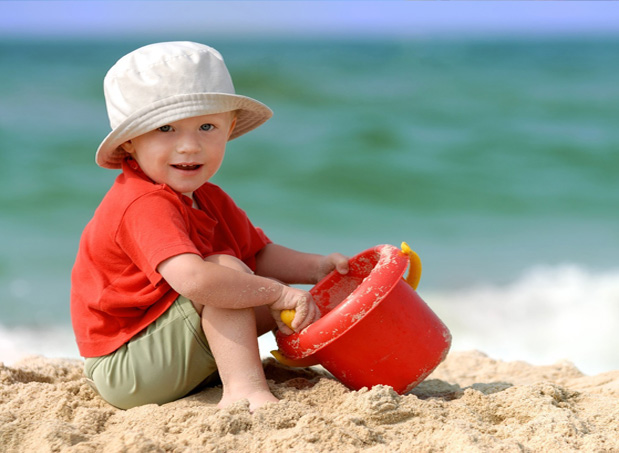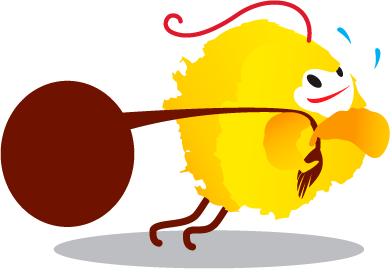News
Back to news list
Children’s Runet: National survey results04.03.2019
|
The survey was conducted by the Internet Research Institute with the support of the .ДЕТИ domain administrator
The Internet Research Institute published the results of its new national survey, Children’s Runet 2018. The purpose of the survey was to develop a basic and consistent set of metrics for evaluating the development of the children’s segment of the Russian internet.
» Full version of the Children’s Runet 2018 survey
The research was supported by the Ministry of Digital Development, Communications and Mass Media, Kaspersky Lab, ROCIT and the Smart Internet Foundation (administrator of the .ДЕТИ domain).
The current statistics were provided by project partners Mediascope, the Brand Analytics social media analysis system and the Public Opinion Foundation.
Children’s Runet is a segment of the Russian internet that brings together children’s content and its consumers; 24.5 million Russians, including children and their parents, visit websites specializing in children’s content. The number of children’s content users across platforms, including social networks and video hosting platforms, stands at 41 million people.
However, considering that the audience of the children’s Runet also includes users from other countries, the total number of active consumers, including children and adults, is 53 million.
On average, children start using the internet at a younger age, when they are four or five years old. More than one-third go online independently. Forty-four percent of children aged 5 to 7 have their own smart phones; for children aged 8 to 11, the figure is 74%. This is a result of many trends, mainly the development of technologies such as voice assistants. Also, the new generation of parents have been internet users from early childhood.
The main communications trend for young people in 2018 was mobile social video platforms such as like.video (more than 70% of users are under 18) and tiktok (over 40%). Both platforms were developed in Asia (Singapore and China, respectively), which is in line with the trends and content preferences of Russian young people.
Some 23% of parents use security tools besides antivirus software. In the past three years, the share of families using secure (children’s) search engines has increased from 5% to 23%. Three times more people started using parental controls offered by their internet providers (increase from 4% to 12%). These changes are due to a wide promotion of internet security as well as the fact that younger parents are more tech-savvy.
“The modern Runet has a great influence on the entire Russian-language community online. This is equally true about the Russian-language children’s content viewed by both children and adults in the CIS, the Baltics, Germany, Israel, the United States and other countries where there are Russian-speaking people. Therefore, the children’s Runet plays a big role in integration and ensures that the new generation has connections to the Russian language and culture. Support and development of children’s content must remain a priority for Runet development,” commented Alexei Volin, Deputy Minister of Digital Development, Communications and Mass Media.
In cities with a population of at least 100,000 people, internet users include 93% of children aged 5 to 11, 89% of children aged 5 to 7 and 97% of children aged 8 to 11. Children aged 5 to 7 spend 39% of their time on the internet unsupervised. This figure increases to 55% by the age of 8 to 11.
Almost every day (6 to 7 days a week) 45% of children use the internet. The older the child, the more often he or she uses the internet. At the age of 8 to 11, 54% of children use the internet almost every day.
Children spend more time online on weekends, with 44% of children using the internet for more than three hours on weekends (on weekdays, only 17% of children aged 5 to 11 spend three or more hours online).
Some 67% of children aged 5 to 11 use smart phones to go online. Smart phones are the primary device children aged 8 to 11 use to access the internet (74% of children). Children aged 5 to 7 also like using tablets (48%).
Some 74% of children aged 8 to 11 have their own device for the internet (in cities with a population of at least 100,000). For younger children, the percentage is much lower (44%). Overall, 60% of children aged 5 to 11 have their own devices.
Content consumption changes with age. Young children aged 5 to 7 mostly watch videos (95%) and play games (60%); children aged 8 to 11 spend more time studying and reading educational content (83%) as well as on social networks (55%). At the same time, multimedia entertainment remains the most popular online activity for children aged 8 to 11. Some 86% watch videos, 74% play online games, and 68% and 66% search for images and music, respectively.
In cities with a population of at least 100,000 people, the most popular websites on Runet for young people aged 12 to 17 are VKontakte (3,737,000), Google (3.5 million), Yandex (3.27 million), Youtube (3.2 million) and Instagram (2.64 million).
VKontakte is the primary website where children share and create content. Around 20.5% of users who create content for this social network are under 18.
The main communications trend for young people in 2018 was mobile social video platforms such as like.video (more than 70% of users are under 18) and tiktok (over 40%).
Gaming sites are dominate among communication platforms with a large share of content creators under 18. The most popular websites, warface.team, steamcommunity.com and discord.gg, have 62%, 44% and 37% underage content creators, respectively.
Increasingly more parents think it is necessary to monitor their children’s internet consumption. In 2018, 96% gave a positive answer (94% in 2015, 91% in 2013 and 90% in 2012).
Only 23% parents use security tools besides antivirus software. In 2015 and 2013, the percentage was 17% and 14%, respectively.
In the past three years, the share of families using secure (children’s) search engines has increased from 5% to 23%. Three times more parents started using parental controls offered by their internet providers (increase from 4% to 12%).
Some 18% believe that there are no safe services for children online. In 2015, 24% respondents gave the same answer.
Parents see big portals as the safest for children (35% of parents in 2018 and 34% in 2015). Only 8% think that search engines are safe (11% in 2015). Only 12% of parents believe that social networks are safe.
The majority of parents realize their own responsibility for children's safety online. The younger the parents, the higher the indicator. Parents who do not use the internet speak about the responsibility of the government and schools twice as often.








